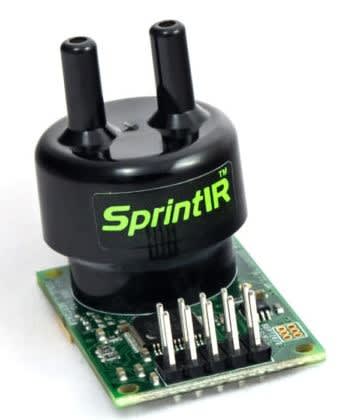How to monitor CO2 in Modified Atmosphere Packaging (MAP) applications
Follow articleHow do you feel about this article? Help us to provide better content for you.
Thank you! Your feedback has been received.
There was a problem submitting your feedback, please try again later.
What do you think of this article?
Typically, certain foods such as meat, salad and fruit have a relatively short shelf-life. By the time food lands on the supermarket shelf, it may already be past its best. Yet consumer demand is for more fresh, tasty and high quality produce.
MAP (Modified Atmosphere Packaging) technology is used throughout the food and processing industries to extend the shelf life of food. This method of packaging uses a controlled environment to keep food fresh and preserve taste and visual appearance.
For example, MAP is used in packaging for meat, sandwiches and bakery products to guard against spoilage and preserve freshness for longer. A specific level of CO2 is required for optimal shelf life, and this level varies for different products.
The controlled atmosphere equipment manufacturer, Storage Control Systems (SCS), has developed a portable gas analyser for MAP applications. One example usage is on a food production line, where sample readings must be taken from packages at regular intervals. For this application, a hollow needle is inserted into the packaging to analyse the atmosphere and ensure optimum CO2 levels are maintained.
SCS faced several challenges in developing their analyser. Primarily, the issue of speed, as typical CO2 sensors can take several minutes to reach a stable reading. This could be detrimental on a high-speed production line, where a fast reading is required in order to meet sampling requirements and avoid packages being shipped with incorrect CO2 levels, with the risk of spoilage.
A second challenge was power consumption since a portable analyser would need to be battery powered and therefore have very low power demands. The sensor that SCS had previously used in their instruments had very high-power consumption. This made it unsuitable for use in a battery powered portable device. Other sensors used by SCS were also not high speed enough to give the fast readings required for this application.
To achieve the required CO2 sampling rates in their MAP analyser, SCS used a high-speed SprintIR®-A CO2 sensor, manufactured by CO2 sensor specialist, Gas Sensing Solutions (GSS). The SprintIR®-A sensor takes 20 measurements per second from only a 3ml sample. Therefore, the analyser only has to sample 30ml of CO2 gas in order for the sensor to give a fast, precise reading.
The SprintIR®-A sensor also met the low power requirements for the SCS analyser. With a power consumption of only 35mW, it’s ideal for use in a battery-powered portable device. GSS use their own manufactured LEDs as the light source for NDIR absorption. This means the sensor only needs a fraction of the power of typical infrared CO2 sensors.
Kevin Johnson, Production Manager at SCS, said, “The innovative technology of the GSS sensor has enabled us to create a solution that no other CO2 sensor could. This analyser measures levels of CO2 from 0 to 20% with great accuracy, ensuring that the use by date is achieved. We can now offer rapid response, handheld CO2 analysers for Modified Atmosphere Packaging that are easy to use and save customers money through improved quality control.”



